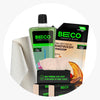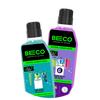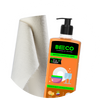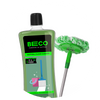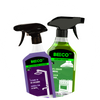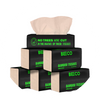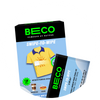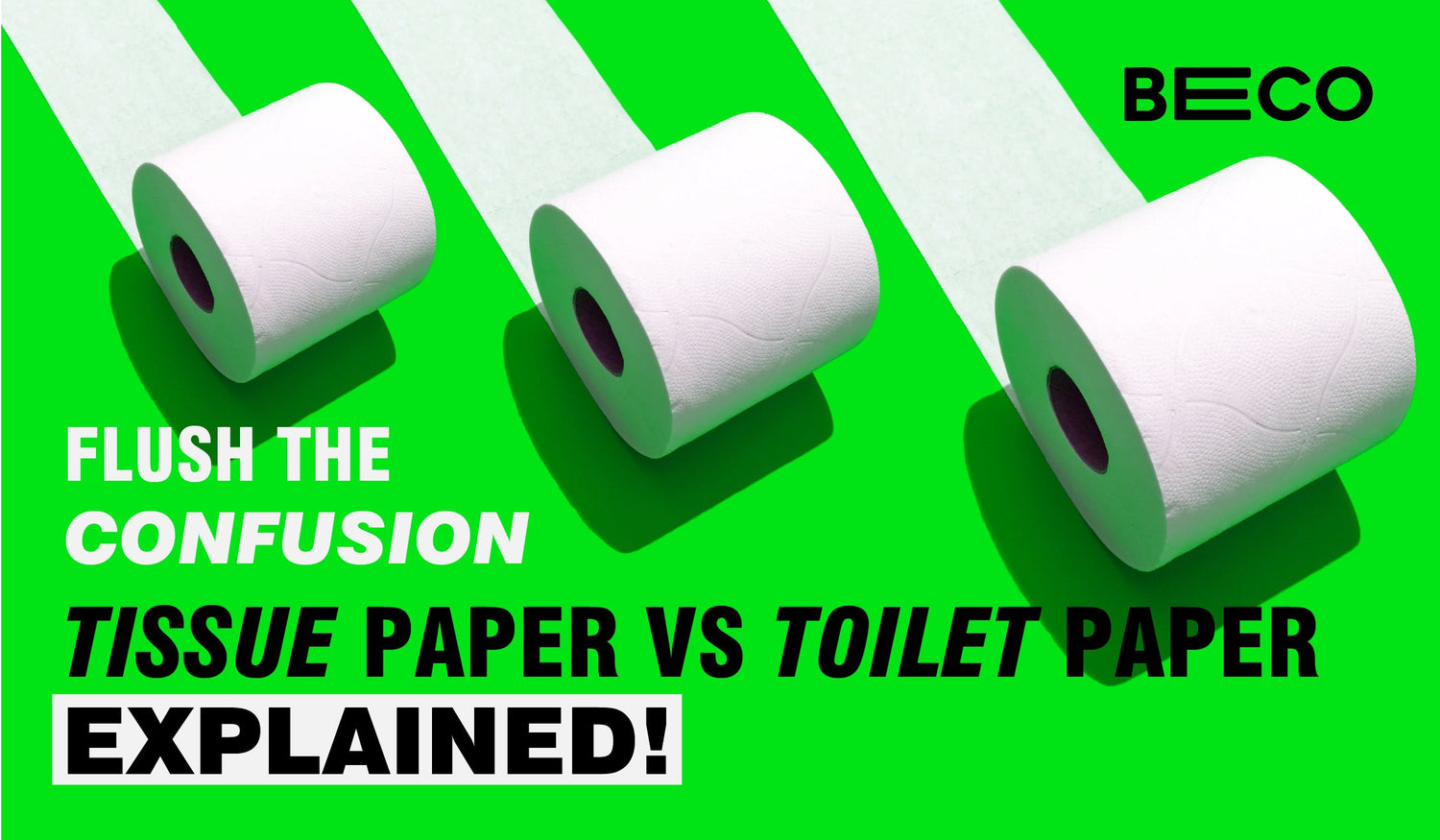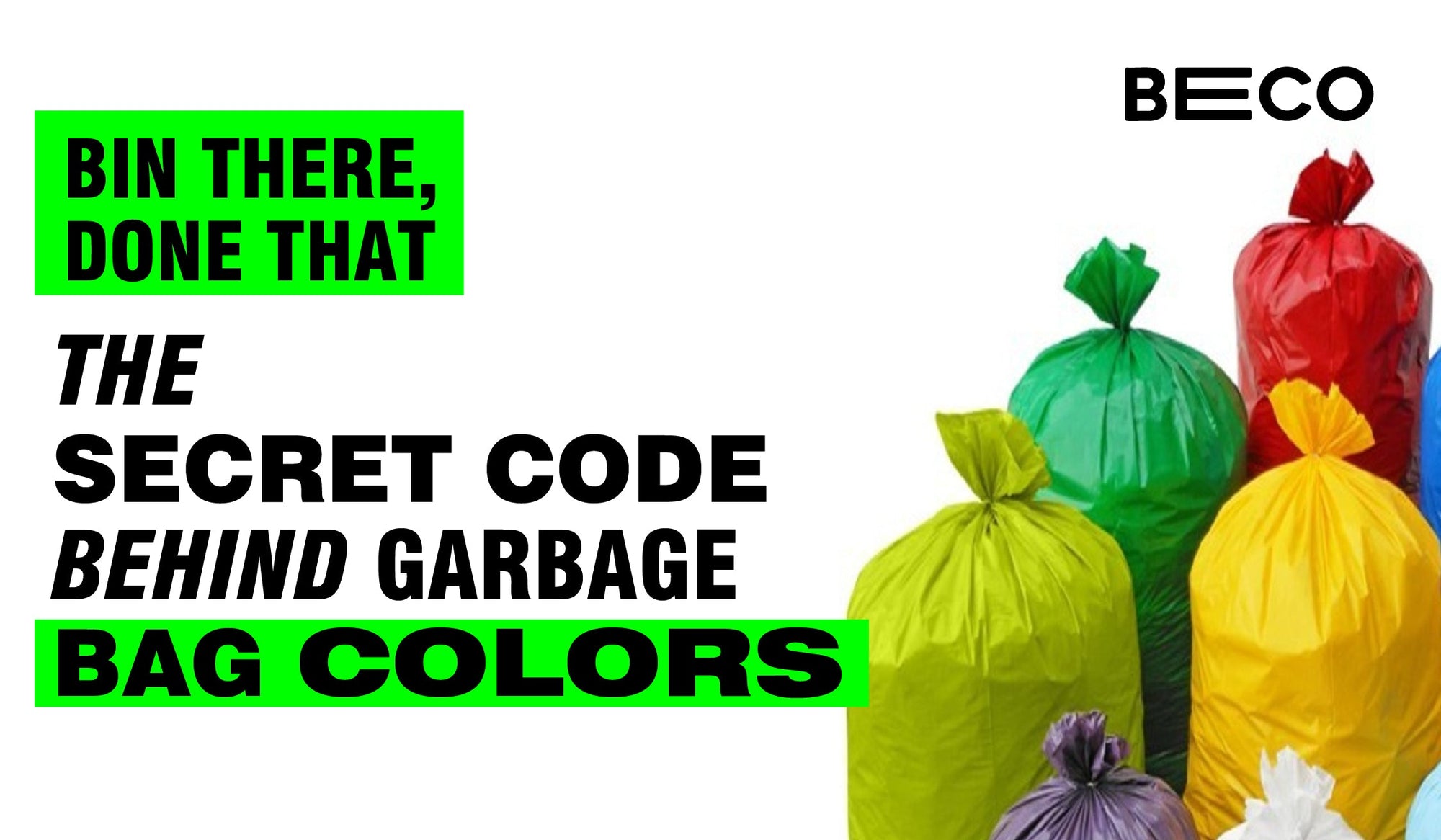You’d think by now we’d all know our tissues from our toilet paper. Yet somehow, we still end up learning the difference the hard way. Like that time you grabbed a facial tissue roll for your bathroom, which is obviously a rookie mistake, or used toilet paper to wipe your nose during an allergy and instantly regretted it.
The truth is, they look alike, feel alike, and even sit side by side on supermarket shelves waiting to trap the unsuspecting shopper. But one’s built to dissolve gracefully, and the other’s built to hold its ground. Same soft look, wildly different consequences.
So, let’s settle the tissue paper vs toilet paper debate once and for all; without any awkwardness or bathroom talk overload.
Tissue vs Toilet Paper: Same Family, Different Jobs
Sure, both start as pulp and end up in your bathroom or handbag. But comparing tissue paper vs toilet paper is like comparing a silk scarf to a kitchen towel; they’re both soft, but they live very different lives.
1. What They’re Made Of
Both toilet paper tissue and tissue paper are made from wood or bamboo pulp. The difference lies in how they’re processed. Toilet paper is designed to dissolve quickly in water, so your plumbing doesn’t start plotting revenge, while tissue paper is made to stay intact a little longer.
That’s why toilet paper disintegrates easily when flushed, but facial tissues don’t; they’re sturdier, and often infused with lotion or aloe for comfort.
If you want to see the sustainable side of softness, try Beco’s Bamboo Tissues, papers strong enough for sneezes, gentle enough for skin, and kind enough to the planet.
Toilet Paper: The Unsung Hero of the Bathroom
Okay, fair talk, toilet paper doesn’t get the respect it deserves. It’s there through thick and thin (ply, that is), yet it rarely gets any credit.
Soft, Strong, and Flushable
The best toilet paper tissue strikes the perfect balance between softness and strength. Too soft, and it tears like a bad alibi. Too strong, and you might as well be using a napkin. The good ones are engineered to break down fast in water, because no one wants to be that person calling the plumber every week.
Bamboo Makes It Better
Traditional toilet rolls are paper-heavy and tree-hungry. We suggest using eco-friendly alternatives like bamboo toilet papers. Bamboo grows up to 30x faster than trees and doesn’t need replanting. Products like Beco’s Bamboo Toilet Paper give you premium comfort without the guilt.
Fun fact: The average person uses about 100 rolls a year. That’s roughly 25,000 sheets per person! Got a smaller household? Go for the Bamboo Tissue Roll; same quality, smaller pack.
Tissue Paper: The Soft All-Rounder
While toilet paper rules the bathroom, tissue paper is the multitasker of the hygiene world; always there for your runny nose, spilled coffee, or makeup smudge.
Facial Tissues: Comfort for Your Face
Facial tissues are built for one purpose: being soft where it counts. The fibers are smoother, and they often have added lotion or aloe for that little ahhh factor. But beware; flush them, and you’ll meet your plumber faster than you’d like.
If you’re still using rough tissues that feel like sandpaper, upgrade to our best in class Bamboo Facial Tissues. They’re soft, absorbent, and planet-friendly, basically the tissue equivalent of self-care.
Table Napkins: For Spills, Not Thrills
And then there’s the serving napkin, tissue paper’s classy cousin. Perfect for wiping sauce off your face during that little messy moment during your favourite meal. Try Beco Bamboo Serving Napkins for a guilt-free cleanup—they look chic, feel luxe, and biodegrade faster than your dinner guilt.
Is Tissue Paper and Toilet Paper the Same Thing? (Spoiler: Nope)
The short answer: NO.
The long answer: still NO, but with a bit more details.
Here’s the real difference between tissue paper and toilet paper. Tissue paper is the multitasker of the hygiene world, made for personal care, cleaning, or table use. It’s soft yet sturdy, sometimes layered or treated for strength, and designed for your skin.
Toilet paper, on the other hand, is built for one very specific job; bathroom hygiene. It’s softer, thinner, and made to disintegrate quickly in water so your drains don’t wage war against you later. While both may look and feel similar, their destinies couldn’t be more different. One’s made to comfort. The other’s made to disappear.
Eco-Friendly Angle: Bamboo to the Rescue
Let’s talk about sustainability, because paper waste isn’t just a tissue issue; it’s a global one. The paper industry is responsible for about 14% of global deforestation, and tissues/toilet rolls make up a surprisingly large chunk.
Switching to bamboo-based tissue products reduces that impact massively. Bamboo regenerates fast, needs no pesticides, and uses 30% less water than trees. Plus, it’s naturally antibacterial.
-
Use Beco Ultra Soft Baby Tissues for sensitive skin; they’re 3-ply, gentle, and 100% biodegradable.
-
Dispose of used tissues responsibly in compostable garbage bags for efficient waste management.
The result? Less guilt, less waste, and plumbing that doesn’t hate you.
The Great Tissue Paper vs Toilet Paper Debate: Common Myths Busted
Myth #1: “They’re basically the same.”
Nope. Toilet paper is meant to dissolve; tissue paper is meant to last just long enough to get the job done. Mix them up, and you’ll clog more than just confusion.
Myth #2: “Flushable facial tissues exist.”
That’s marketing mischief. Even so-called “flushable” facial tissues don’t dissolve like real toilet paper tissue. Use them, don’t flush them.
Myth #3: “Eco-friendly means weak.”
Not anymore. Modern bamboo tissue paper is stronger, softer, and far more sustainable. It’s like luxury minus the eco-guilt.
How to Choose the Right Paper for the Right Job
1. For Bathrooms: Toilet Paper
Go for multi-ply rolls that balance softness and durability. If sustainability matters (and it should), choose bamboo toilet paper.
2. For Everyday Use: Tissues
Keep a box of Beco Bamboo Facial Tissues on your desk or in your car as they're absorbent, gentle, and always ready for life’s little messes.
3. For Dining: Napkins
Table manners meet sustainability with Bamboo Serving Napkins. Perfect for dinner parties or your solo pizza night.
4. For Baby Care: Ultra-Soft Tissues
Babies deserve better than synthetic wipes. Use Ultra Soft Baby Tissues; they’re gentle on skin and tough on mess.
Facts You’ll Never Unsee
-
The average household uses over 100 rolls of toilet paper and 50 boxes of tissues every year. That’s roughly 1,000 km of paper, long enough to wrap around a small city.
-
Japan was the first country to invent toilet paper rolls as we know them today. Before that, people used… let’s just say creative alternatives.
-
The first facial tissue was invented in 1924 by Kleenex as a makeup remover. The “blowing your nose” idea came later; thanks to valuable user feedback!
-
Bamboo toilet rolls biodegrade 5x faster than regular ones, making them plumbing-friendly and planet-approved.
Check out our collection of Natural Wet Wipes, made with natural ingredients and biodegradable fabric.
The Bottom Line
Let’s recap the difference between tissue paper and toilet paper in plain words:
-
Tissue paper: versatile, absorbent, non-flushable, used for hands, face, and dining.
-
Toilet paper: soft, dissolvable, flushable, used for bathroom hygiene.
They may look similar, but their engineering (and purpose) couldn’t be more different. Treating one like the other is like putting your phone in the dishwasher; it fits, but that doesn’t mean you should.
If you’re looking to upgrade your paper game, go bamboo. Beco has eco-friendly, high-quality options that are kind to your skin, your plumbing, and the planet!

